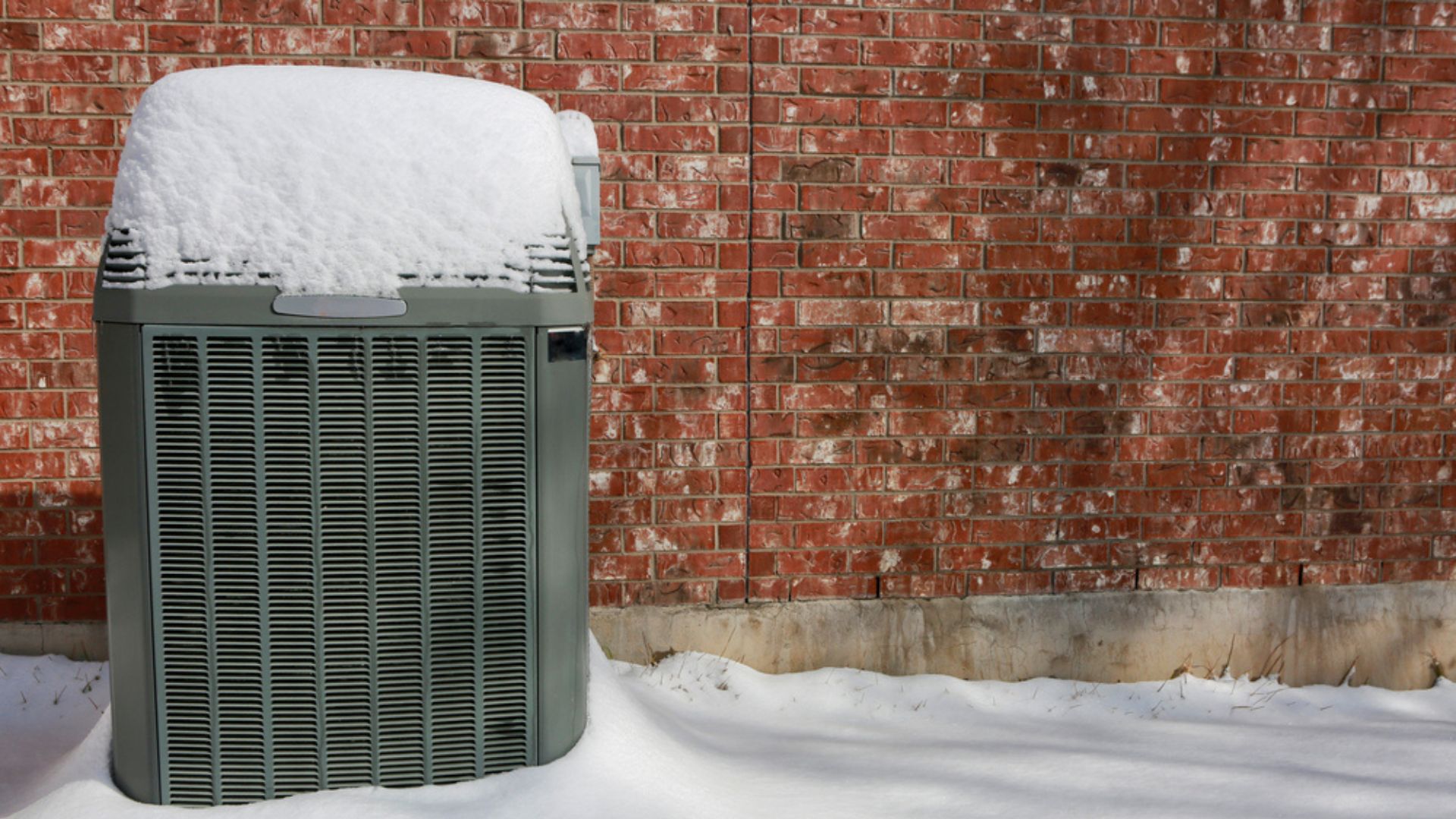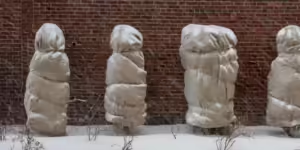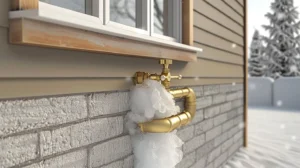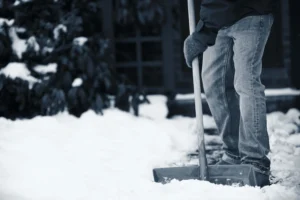When extreme winter weather hits, your HVAC system works overtime to keep your home warm. However, freezing temperatures, ice, and snow can take a toll, potentially causing parts of the system to freeze and shut down. Preventing frozen HVAC components is essential to maintaining a cozy and efficient home during the coldest months. Here’s how to keep your HVAC system running smoothly all winter long.
1. Insulate Exposed Pipes and Components
Exposed pipes and refrigerant lines are particularly vulnerable to freezing.
- What to do:
- Wrap exposed pipes and lines with foam insulation sleeves or self-adhesive pipe wrap.
- Use weatherproof insulation for outdoor components to shield them from the elements.
- Check for any gaps in insulation and seal them with tape or additional materials.
- Why it works: Insulation helps maintain consistent temperatures in pipes, preventing freezing and condensation buildup.
2. Keep Outdoor Units Clear of Snow and Ice
Snow and ice can block airflow and cause your HVAC system to overwork or freeze.
- What to do:
- Remove snow, ice, and debris from around your outdoor unit using a broom or plastic shovel.
- Avoid using metal tools that can damage the unit’s coils or fins.
- Create a barrier or cover to keep snow from accumulating, but ensure the cover does not restrict airflow.
- Pro Tip: Invest in a breathable outdoor HVAC cover designed to protect the unit while allowing proper ventilation.
3. Check and Clean Air Filters Regularly
A clogged air filter can restrict airflow, making your HVAC system less efficient and more prone to freezing.
- What to do:
- Check air filters every month during winter and replace them as needed.
- Use high-quality, HVAC-approved filters for better airflow and efficiency.
- Keep an extra set of filters on hand for quick replacements.
- Why it works: Clean filters ensure proper airflow, reducing strain on the system and preventing freeze-ups.
4. Maintain Proper Airflow Around the System
Blocked vents, registers, or return air ducts can create uneven airflow, increasing the risk of frozen coils.
- What to do:
- Keep furniture, curtains, and rugs away from vents and registers to allow unrestricted airflow.
- Inspect return air ducts for blockages and clean them if necessary.
- Close windows and doors to minimize drafts and heat loss.
- Why it works: Proper airflow helps maintain consistent temperatures and reduces stress on the system.
5. Ensure Proper Drainage
Blocked drainage lines can cause water to freeze inside your HVAC system, leading to significant damage.
- What to do:
- Check condensate drains and lines for clogs and clear them as needed.
- Use a mixture of water and vinegar to clean out algae or debris in the drain pan.
- Make sure the drainage system is sloped correctly to prevent standing water.
- Why it works: Proper drainage prevents water from pooling and freezing, which can damage internal components.
6. Use a Smart or Programmable Thermostat
A smart thermostat helps maintain steady indoor temperatures, reducing the risk of freezing HVAC components.
- What to do:
- Set your thermostat to a consistent temperature during extreme cold to prevent unnecessary strain on the system.
- Use the “Hold” or “Away” feature when you’re not home to avoid major temperature swings.
- Monitor temperature fluctuations and make adjustments remotely with a smart thermostat app.
- Why it works: Consistent indoor temperatures prevent overworking the system and protect components from freezing.
7. Keep the HVAC Unit Running
Turning your HVAC system off during extreme cold can lead to frozen components.
- What to do:
- Keep the system running, even at a lower temperature, to prevent ice buildup on coils or pipes.
- Use the “Auto” fan setting instead of “On” to allow the system to cycle properly.
- Avoid rapid temperature changes, which can stress the system.
- Why it works: Continuous operation keeps refrigerant and air moving, reducing the chance of freezing.
8. Seal Gaps and Drafts Around the Home
Cold air entering your home forces your HVAC system to work harder, increasing the risk of freezing.
- What to do:
- Seal gaps around windows, doors, and vents using weatherstripping or caulk.
- Add insulation to attics, basements, and crawl spaces to reduce heat loss.
- Use draft stoppers or door sweeps to block cold air from entering under doors.
- Why it works: A well-sealed home reduces the strain on your HVAC system and helps maintain stable indoor temperatures.
9. Schedule Routine Maintenance
Regular professional maintenance is essential to ensure your HVAC system is prepared for winter.
- What to expect:
- A technician will inspect refrigerant levels, check for leaks, and clean components like the coils and blower motor.
- They’ll identify and repair any issues that could lead to freezing, such as malfunctioning defrost systems.
- Maintenance appointments are typically recommended in the fall before extreme cold sets in.
- Why it works: Routine maintenance keeps your system running efficiently and helps prevent unexpected breakdowns.
10. Monitor the Defrost Cycle
For heat pumps, a malfunctioning defrost cycle can cause outdoor components to freeze over.
- What to do:
- Listen for the defrost cycle, which should activate periodically to melt ice from the outdoor unit.
- If the defrost cycle isn’t working, turn off the system and call a professional for repairs.
- Avoid manually defrosting the unit with hot water or sharp tools, as this can cause damage.
- Why it works: A functioning defrost cycle prevents ice from accumulating and freezing vital components.
11. Protect Outdoor Components with Windbreaks
Cold winds can exacerbate freezing issues, especially for outdoor heat pumps.
- What to do:
- Install a windbreak, such as a fence or shrubs, to shield the unit from direct winds.
- Ensure the windbreak allows adequate airflow around the HVAC system.
- Why it works: Windbreaks reduce exposure to cold air, helping the system maintain proper temperatures.
12. Use Auxiliary Heat in Extreme Cold
Heat pumps may struggle in extreme cold, so relying on auxiliary or backup heating systems can help.
- What to do:
- If your system has electric or gas auxiliary heat, use it during extreme weather to reduce the load on your HVAC system.
- For homes without auxiliary heat, consider using portable space heaters in the coldest areas.
- Why it works: Auxiliary heat helps maintain comfortable temperatures without overburdening your primary system.
13. Be Prepared for Power Outages
Extreme winter storms can cause power outages, leaving your HVAC system vulnerable.
- What to do:
- Invest in a backup generator to keep the system running during outages.
- Use blankets or portable heaters to maintain warmth until power is restored.
- Avoid restarting the system immediately after a power outage—wait a few minutes to allow the compressor to stabilize.
- Why it works: Staying prepared ensures your HVAC system and home remain protected even during unexpected disruptions.
Final Thoughts: Stay Ahead of Freezing Weather
Preventing a frozen HVAC system during extreme winter weather requires a combination of preparation, maintenance, and smart usage. By insulating pipes, clearing snow and ice, and ensuring proper airflow, you can keep your system running efficiently even in the harshest conditions. With these proactive tips, your home will stay warm, comfortable, and safe all winter long.









